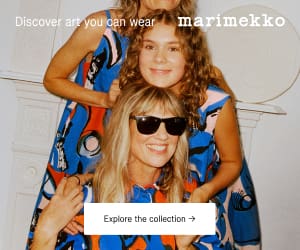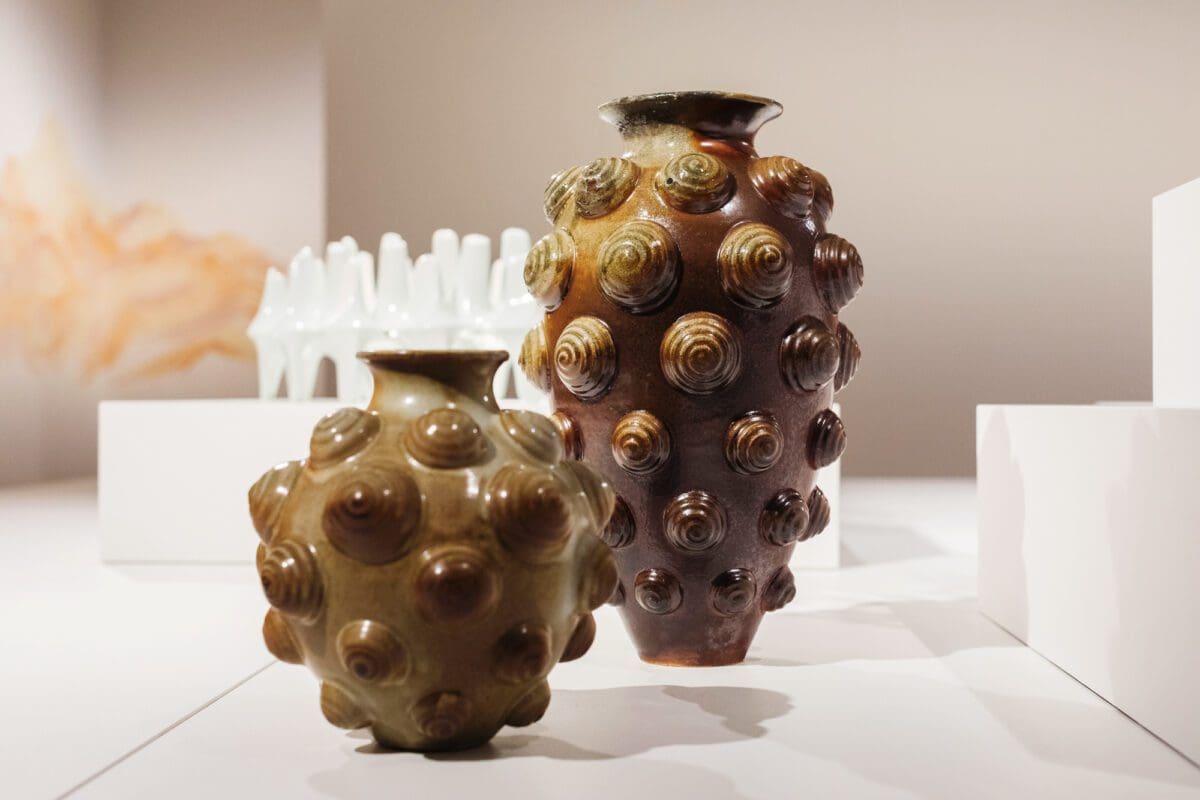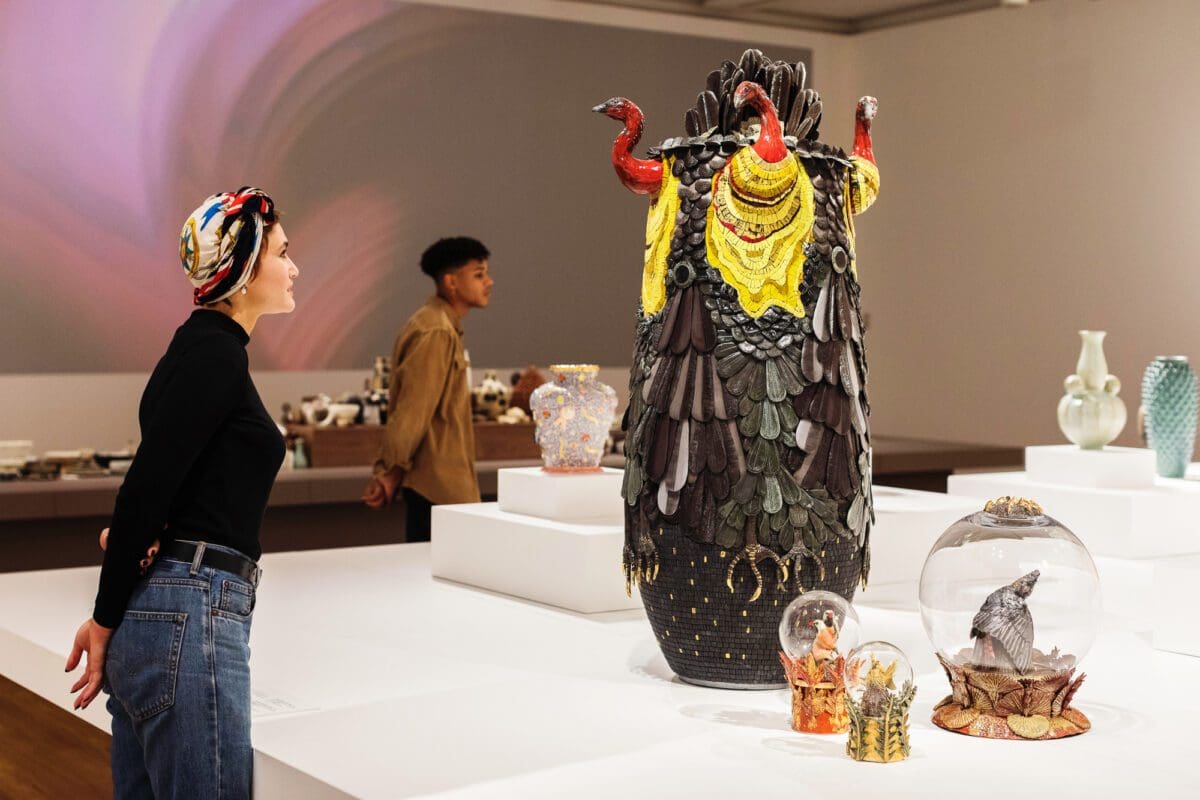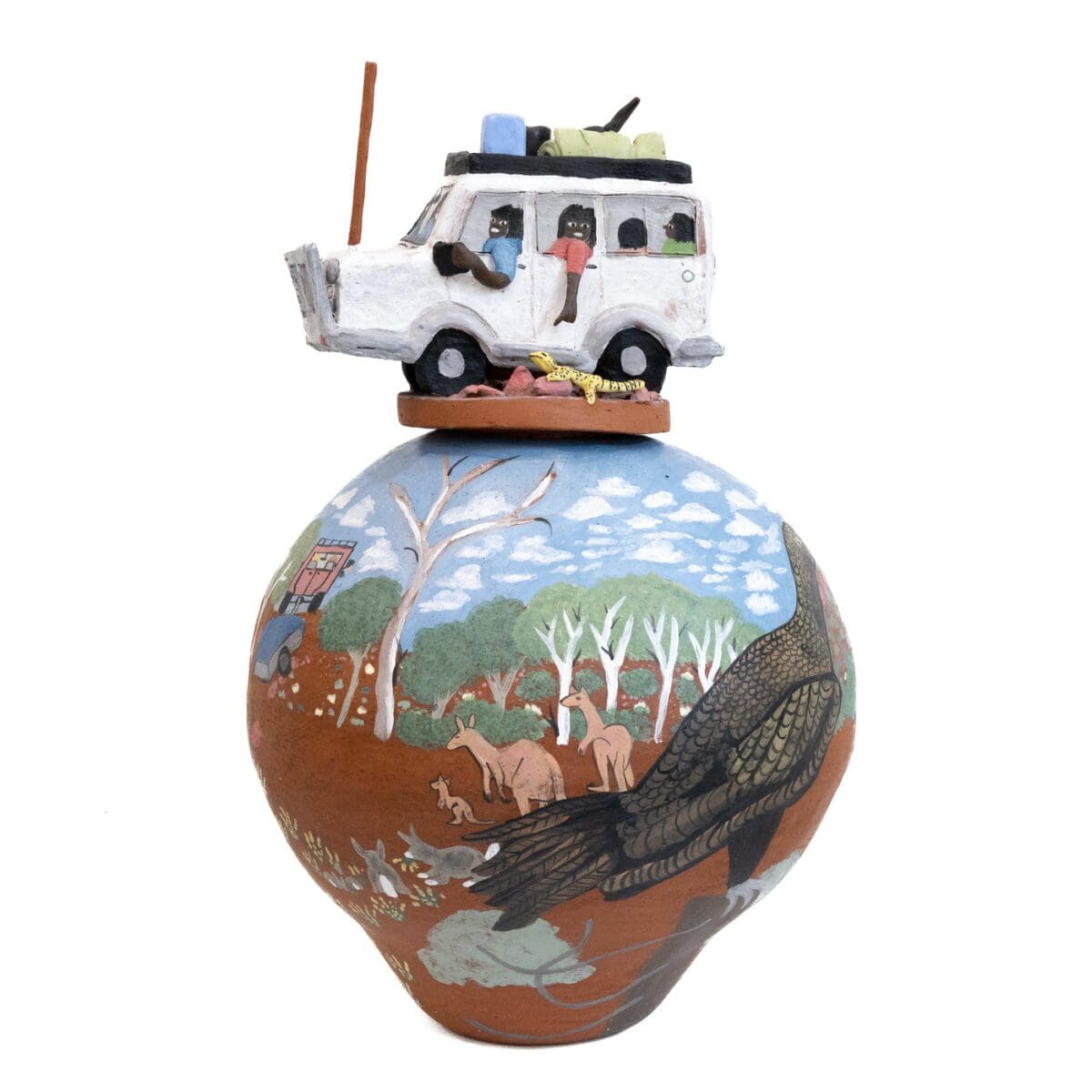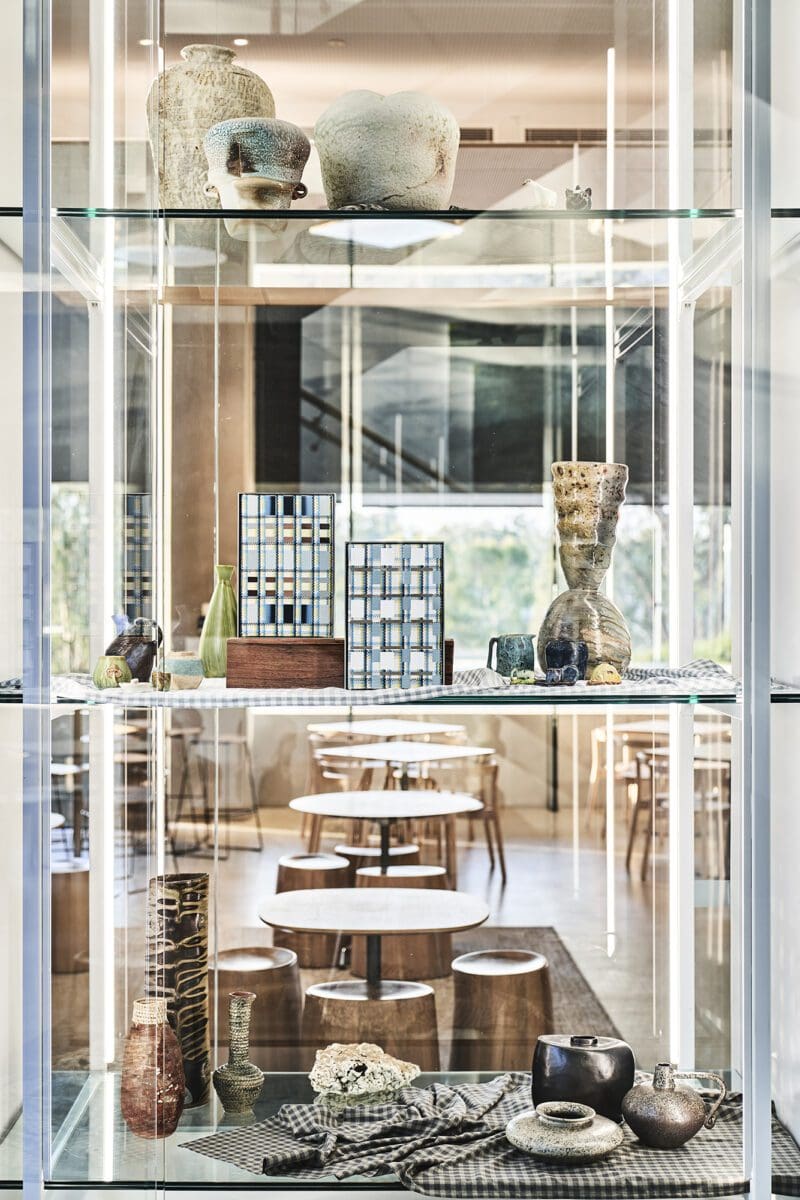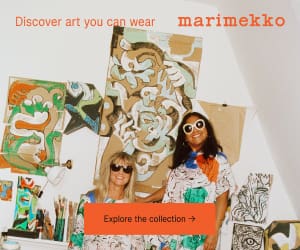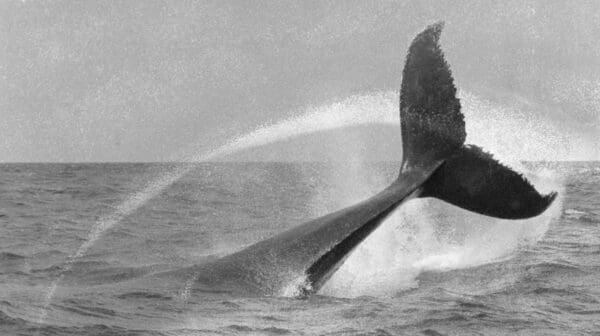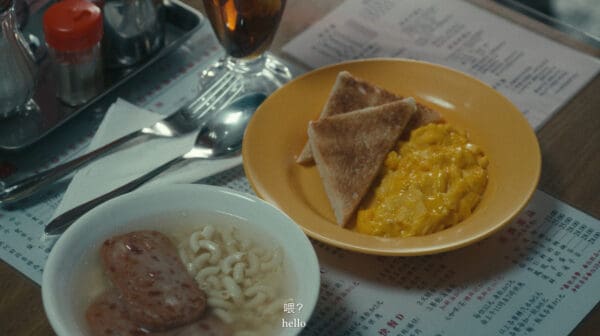Ask any child what medium they would like to work with in art class and they will most likely say clay. Its rich earthy scent and slippery grittiness offers a multi-sensory experience most other mediums cannot match. Laced with the memory of human touch, clay is so forgiving a material it can be embraced by all skill levels—from kindergarten age to professional makers.
Intimately entwined in our everyday lives through utilitarian objects like bowls, vases and plates, ceramics have existed for thousands of years. Beyond its functional use, clay is the foundation of myriad sculptural forms and its popularity crescendos every few decades. With a proliferation of ceramic-based exhibitions on gallery and museum calendars this year, the medium is currently going through a renaissance.
Curator Sarah Engledow puts the apex of this popularity at every 20 to 30 years. “At the moment there’s a big peak, and I think you can put that down to social media and Covid.” Whether chunky and organic, or smooth and polished, the ceramic form requires mindfulness, time, and physical effort to create. With many of us looking for ways to slow down, working with clay remains an easily accessible way to create and communicate ideas.
Engledow recently curated CLAY, an expansive exhibition containing objects drawn from the collections of the Museum of Brisbane and Paper Boat Press ceramics artist, Kylie Johnson. Embracing simple functional pieces through to contemporary sculpture, the exhibition includes three pieces by Brisbane-based ceramicist Bonnie Hislop. Using hand-building techniques coupled with highly decorative illustrations, Hislop creates vibrantly hued vessels that blend feminist and political commentary with an infectious pop vibe.
“My pieces are quite saccharine and sweet on a surface level and could be interpreted quite playfully, but there is a deeper message that speaks to the patriarchal systems underpinning the contemporary art world,” Hislop explains.
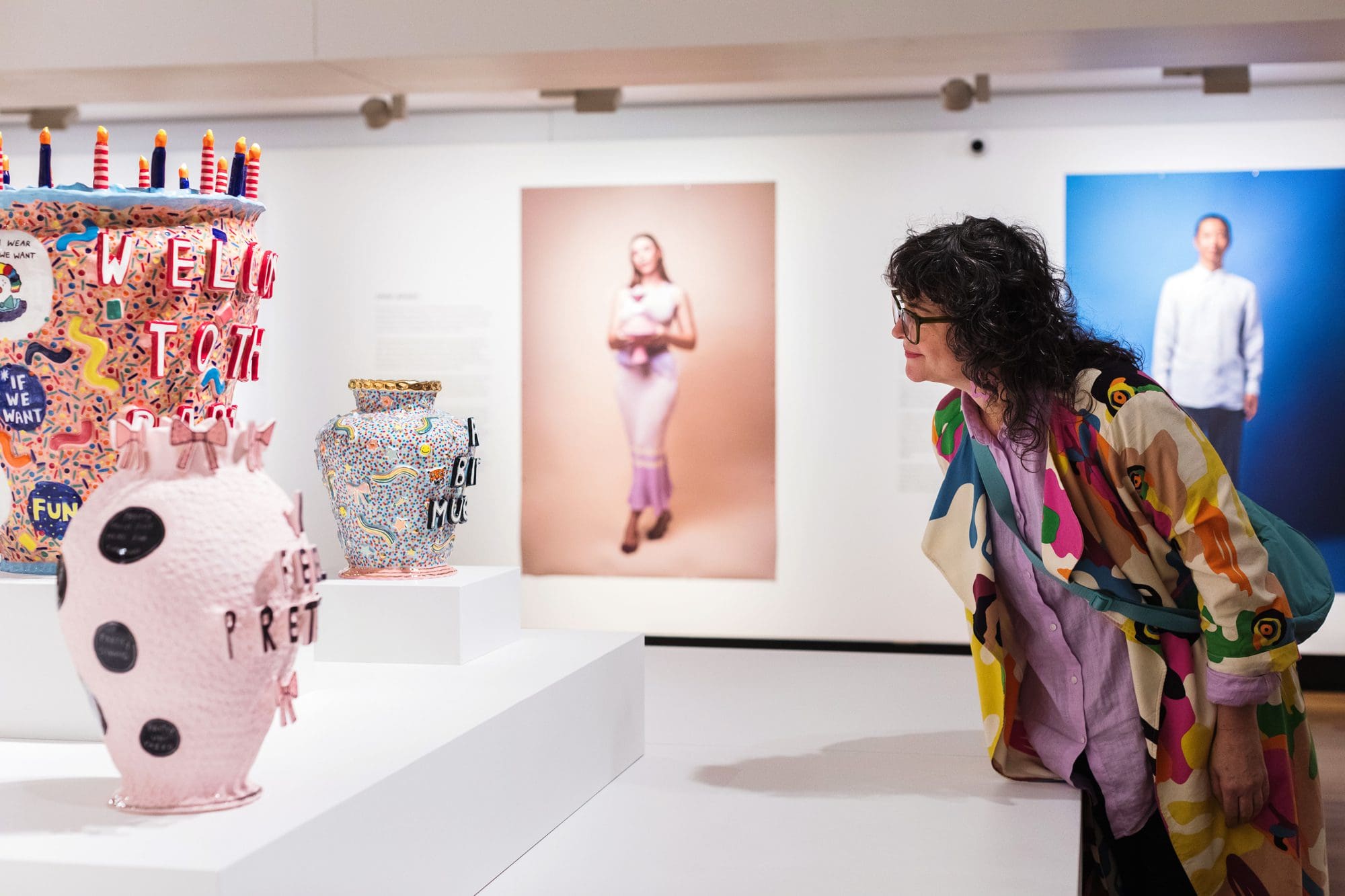
“To be in the room as a female contemporary artist, it’s still seen as necessary to be creating quite masculine work, whereas feminine work is still seen as craft. On the reverse side of my work Welcome to the party, 2023, is a message saying, ‘We’ll eat what we want, we’ll say what we want, and we’ll wear what we want.’ It’s not just welcome to the party, it’s welcome to the new age of feminism.”
Becoming less bound to utilitarian purposes, the ceramic medium can be a powerful vehicle for social and political commentary, and a medium to hold memory and elements of culture. Also included in CLAY, Japanese-born Australia-based artist Kenji Uranishi combines the mid 20th century Japanese ceramic styles of Mingei and Sodeisha with the refined, angular forms of contemporary built environments, while culture and memory are referenced in a commissioned mural by Yuggera and Biri artist Jody Rallah. To create her work, Rallah begins by making unfired ceramic coolamons and then uses them, together with ochres and pigments, as drawing materials. Rallah’s expansive mural stretches across two walls in CLAY and reimagines the landscape that once existed around the Museum of Brisbane, evocatively connecting material to its source.

Illustrating the constantly evolving nature of ceramics, Jugs at Craft Victoria demonstrates how this humble object has progressed from ancient Greek amphora into modern sculptural works blending function with form. Spanning 20 artists from Australia and New Zealand, Jugs includes work by Juz Kitson, an Australian artist who has spent two decades perfecting hand building techniques to eliminate using tools. The result is Alteration of incoming sensoria, 2023, an amphora form embellished with glossy tendril-like protrusions and clustered spirals so profuse they resemble a living organism.
As artists continue to push the boundaries of clay, Adam John Cullen, curator of Three Hares—an exhibition of five artists responding to the Shepparton Art Museum’s ceramic collection—affirms the current trend in ceramics is leaning towards the sculptural. Despite this, he also points out a persistent demand for unique functional objects. “There is a really vibrant community of artists who continue to push and develop more traditional ceramic forms and glazing techniques,” he says.
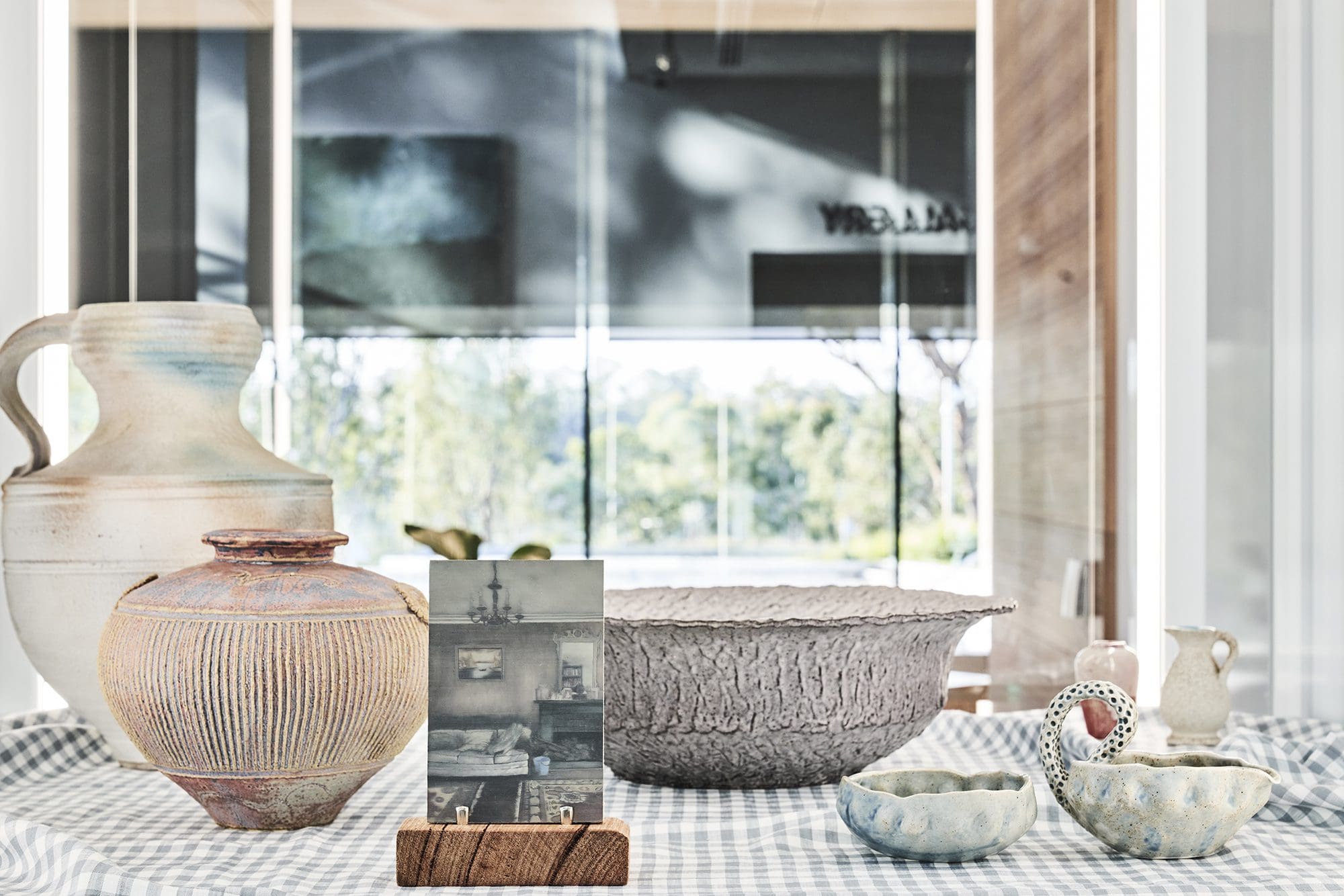
In Three Hares, this is reflected in the work of Gunggandji artist Philomena Yeatman. Influenced by containers used for food collection, Yeatman incorporates natural dyes, native plants and the patterns of seasonal rhythms into the surfaces of her ceramic vessels, inherently linking her objects back to the land they came from.
A material that has remained with us for millennia, clay crosses between function and form, allowing us to create objects that not only aid our daily life but provide enduring beauty and meaning. As Hislop says, “The biggest appeal of clay is being able to make something out of nothing, to make an artwork that can exist in everyday life and I can touch and see every day, rather than just sitting in a folder waiting to be framed and hung up on a wall. I want adventure for my pieces.”
CLAY: Collected Ceramics
Museum of Brisbane
(Brisbane QLD)
13 May—22 October
Jugs
Craft Victoria
(Melbourne VIC)
6 May—24 June
Three Hares: SAM Ceramic Collection
Shepparton Art Museum
(Shepparton VIC)
25 February—3 September

